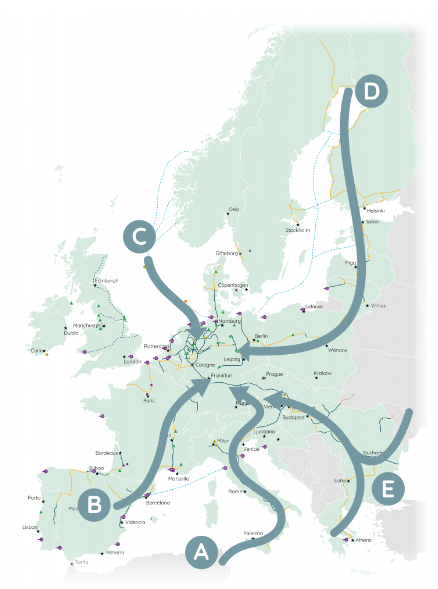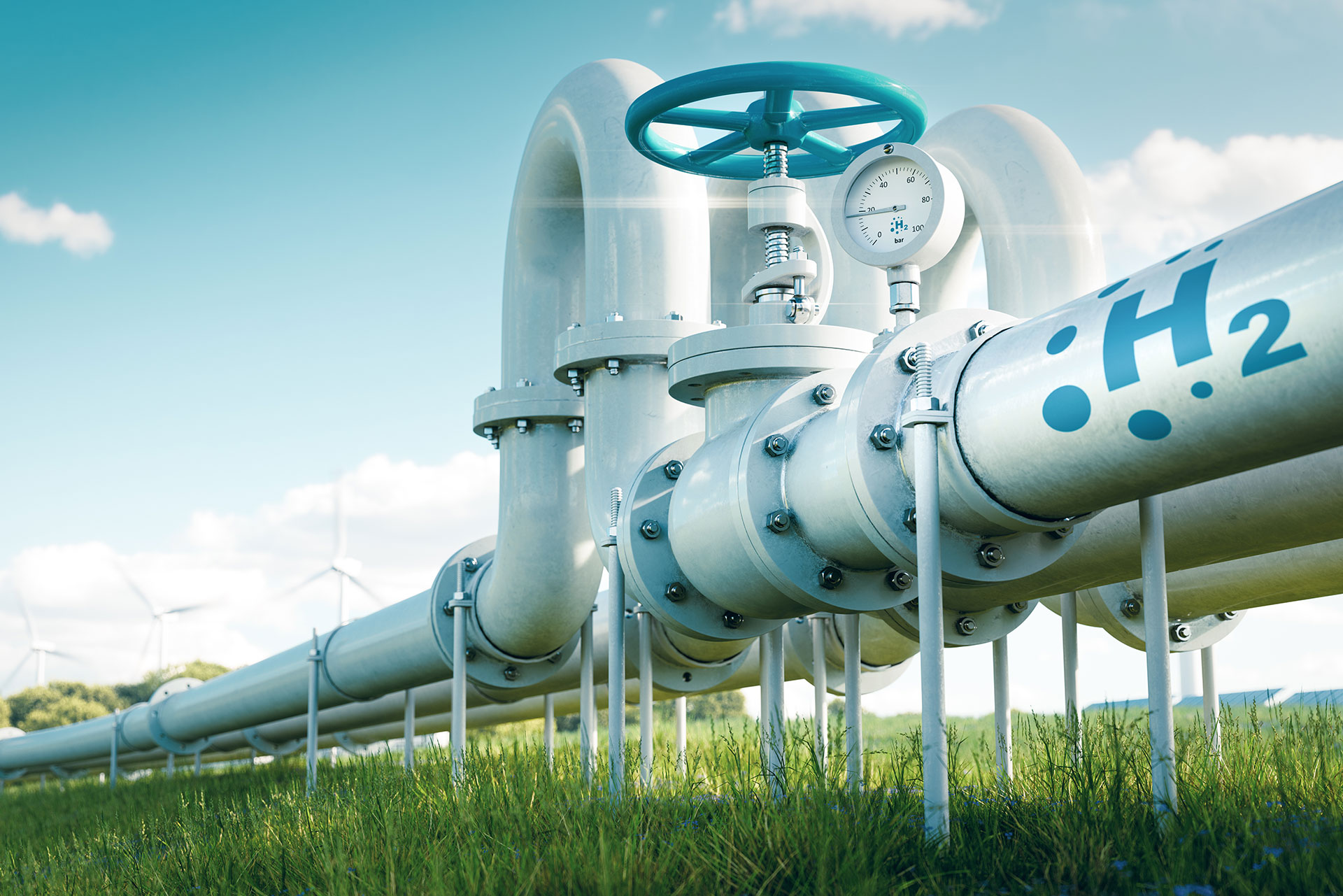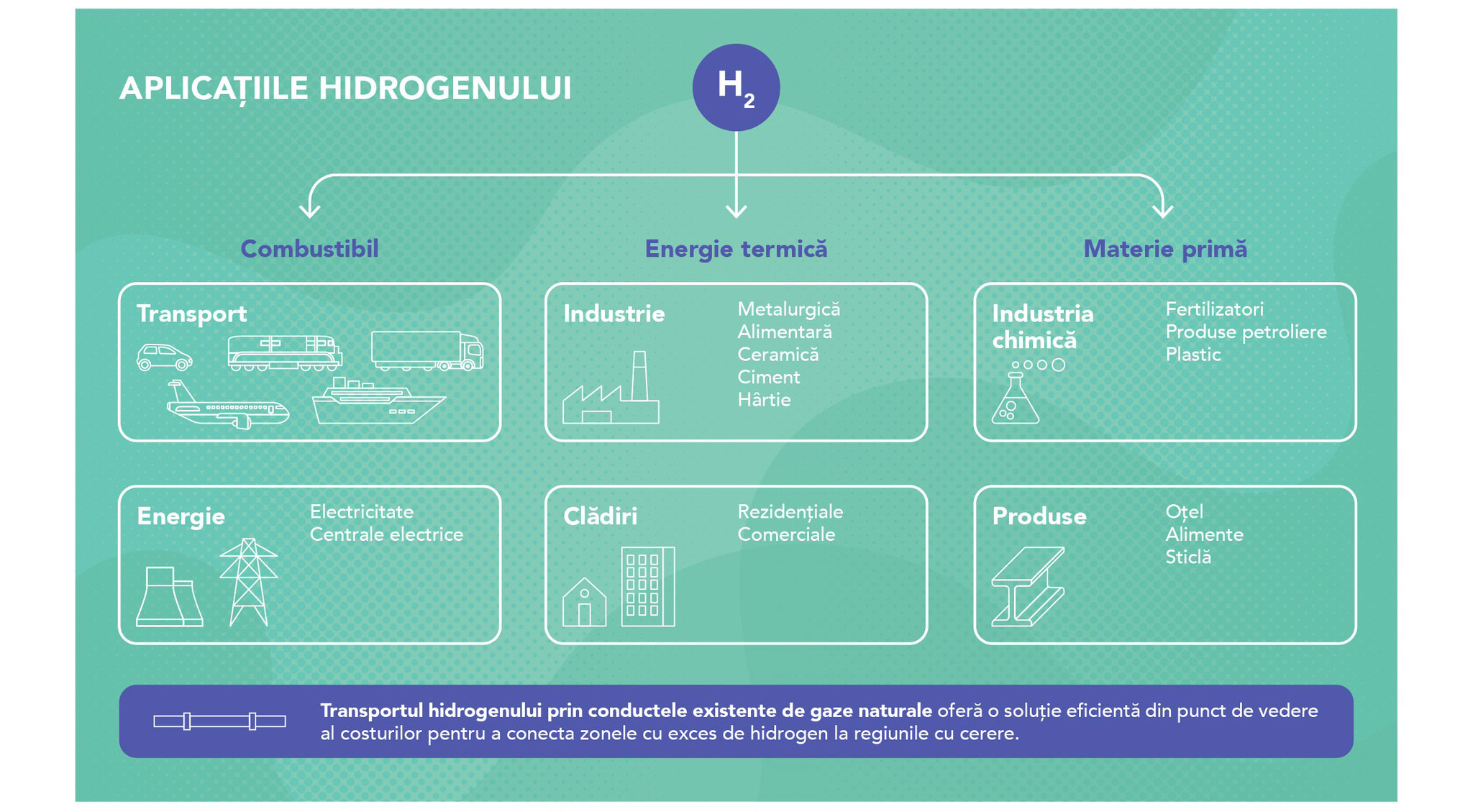Hydrogen is one of the most promising technologies in the energy transition to the climate neutrality of the future. As decarbonisation becomes a global priority, interest in hydrogen has rapidly expanded in areas such as power generation, transport, industry, buildings, due to its versatility - its main strength. Hydrogen also has another significant advantage: it can reuse existing natural gas infrastructure. Although it still faces many technical challenges and other obstacles to reach its potential, it offers many opportunities that Romania should not miss.
Hydrogen is not new. It has been widely available and used for a very long time, although predominantly in the chemical and refining sectors. Read more, this year marks 100 years since the first hydrogen production in Romaniawhich was made at the Nitrogen Târnăveni factory.
"We are one of the few hydrogen producers in the world, producing hydrogen for various applications - chemical, petrochemical, agrochemical, glass, electronics, stainless steel, and so on. The thing that's holding us back a bit is infrastructure. You need an infrastructure for that"said Ioan Iordache, Executive Director of the Romanian Hydrogen Energy Association. In March 2022, it launched, together with the Intelligent Energy Association, the work "Hydrogen and Natural Gas in Romania".
The study looks at how Romania's energy system, and therefore the gas sector, can be transformed and how the use of hydrogen could open a new chapter in the energy transitionbecause its unique properties allow it to be used for carbon-free energy storage and distribution through all forms of use. The volume ends with four scenarios for the development of hydrogen pipeline infrastructure in Romania and a few pages full of suggestions for decision-makers in the private and especially the public sector.
Hydrogen "rainbow"
While hydrogen is an invisible gas, the discussion of hydrogen covers a spectrum of colours ranging from black to green, indicating the carbon intensity of a particular hydrogen technology. Today's most common hydrogen technology uses natural gas to power steam methane reforming (SMR) which produces 'grey hydrogen'. Combined with carbon capture technology, it is known as "blue hydrogen" and is considered a low-carbon energy source, the analysis states.Rethinking hydrogen infrastructure for a net-zero future"published by ICF.com.
There are many other "colours" of hydrogen, such as green - produced using electricity generated from renewable energy sources; red, pink, purple - all three based on nuclear power; yellow - as you might guess, from the sun's energy, and the list is not complete.
Hydrogen's vast integration potential
"Regardless of colour, hydrogen's characteristics lend themselves well to integration with existing energy infrastructure, from natural gas pipelines and appliances to vehicles and power generation. Hydrogen is an energy carrier whose gaseous properties facilitate integration into pipelines, storage in reservoirs and salt caverns, and natural gas combustion technologies. While pure hydrogen creates some undeniable challenges, a moderate amount of hydrogen can be integrated into the natural gas transmission and distribution system relatively easily", the analysis also states.
Recent studies have shown that the existing natural gas distribution network can integrate up to 20% of hydrogen, while in transmission pipelines, the hydrogen component in the natural gas mix can reach 50%, explains ICF.com.
Large-scale hydrogen consumption will require a well-developed transport infrastructure based on a European Hydrogen Backbone (EHB). To this end, 31 European natural gas infrastructure companies, including the Romanian company Transgaz, have submitted to the European Commission a commitment to establish hydrogen supply corridors by 2030. These corridors connect local hydrogen demand and supply in different parts of Europe, and also create connections with neighbouring regions with export potential to meet Europe's hydrogen import needs. Romania is part of Corridor E, linking the countries of South-East Europe (source, HERE).
So, "Hydrogen presents an opportunity to position natural gas infrastructure as a network for low and zero carbon energy supply. However, there are limitations to integrating hydrogen into the current infrastructure that the industry is studying and addressing, including technical, regulatory and policy barriers." notes ICF.com.

Hydrogen applications - opportunities and limitations
Here are the main uses of hydrogen, summarised by Viitorul Energiei in the infographic below:
If we talk about energy sector, hydrogen can directly generate electricity, mixed with natural gas. In the future, power generation turbines could run on 100% hydrogen. Hydrogen also offers an ideal solution for long-term storage of renewable energy. Converting electricity from renewable sources into hydrogen allows it to be stored for weeks, months or years. The hydrogen can then be converted back into clean electricity and sent to the grid when needed.
The transport sector also offers a significant opportunity for the hydrogen market. In the short term, diesel vehicles can be upgraded to accommodate hydrogen blends. Alternatively, hydrogen can be run in dedicated hydrogen vehicles. Because of its high energy density, hydrogen is a more efficient solution for long-distance transport of heavy vehicles than battery electrics.
As regards household sectorresearchers explored converting existing natural gas cooking and heating appliances to run on natural gas mixtures - hydrogen or pure hydrogen.
As far as industry is concerned, although hydrogen is not a miracle solution, it can help decarbonise those sectors that are considered difficult to decarbonise - such as the steel or cement industry, the draft report says. "Limiting climate change and its impacts: an integrated approach for Romania", recently published by the Presidential Administration, which also looks at the role of hydrogen.
Here is what the report says:
- Romania can use and strengthen its capabilities to become a leading player in hydrogen technologies and industries and develop its position in R&D-innovation and business.
- Romania can use all its energy sources to develop its "hydrogen economy" in local and international partnerships. It must therefore develop scientific and technological momentum, commercial traction, as well as industrial, financial and administrative know-how.
- Hydrogen is needed in countless industrial processeswhich means that a strong local production capacity for low greenhouse gas emitting hydrogen would be an incentive for investments in Romanian production plants in general.
Through the National Recovery and Resilience Plan, Romania is committed to completing National hydrogen strategy by 31 March 2023.






